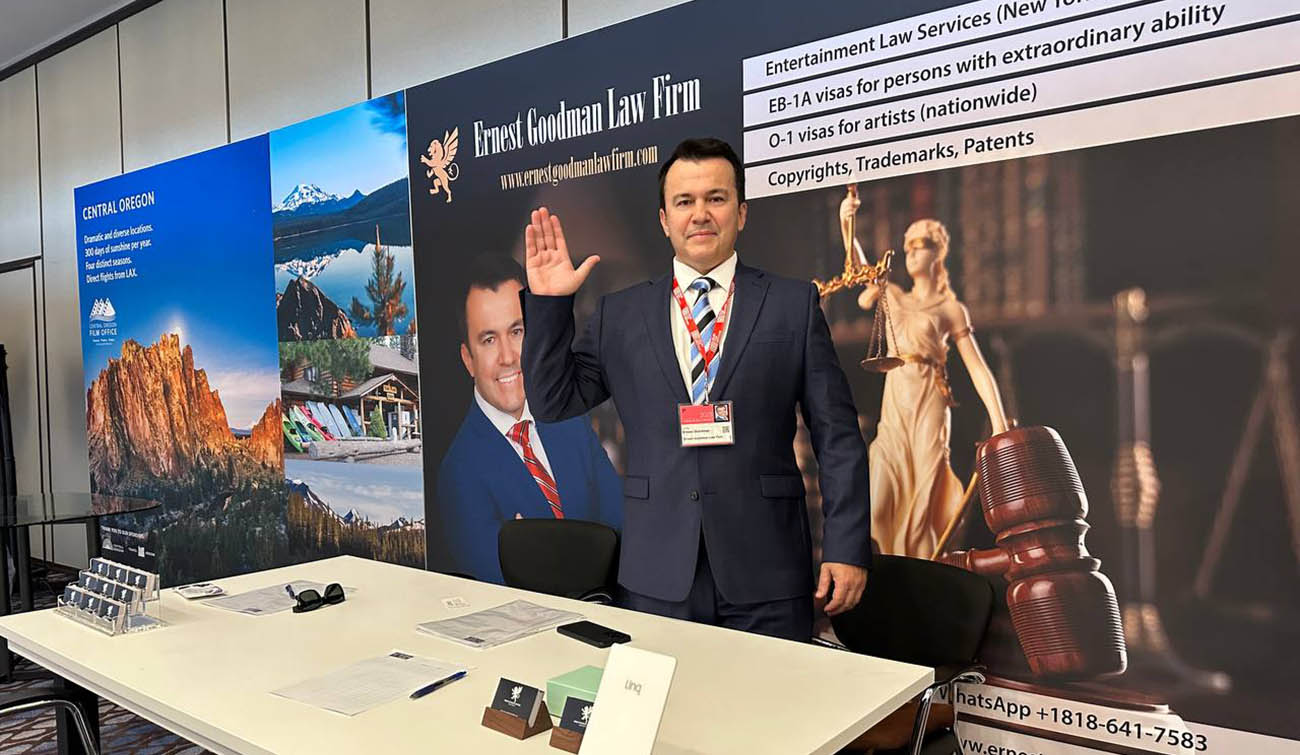Alternative Ways To Get a Green Card While Asylum Case Is Pending
Since my practice includes many asylum cases, I am frequently asked about alternative ways to get a green card while asylum is pending. “Asylum pending” refers to the period after an individual has applied for asylum but before a final decision has been made on their application.
Three preliminary concepts: lawful entry, lawful status, and unlawful presence
Generally, there is no prohibition on having more than one type of application pending with U.S. Citizenship and Immigration Services (USCIS) at the same time.
Aside from winning asylum, probably the most common way that asylum applicants obtain a Green Card is through marriage to a U.S. citizen. But there are other ways, and I will discuss some of those today.
Firstly, let’s discuss three key terms: “lawful entry”, “lawful status”, and “unlawful presence.”
First of all, to obtain an adjustment of status, an alien must enter the U.S. lawfully. Of course, there are exceptions, such as for immediate relatives, children under 21, and parents of a U.S. citizen. However, other than these exceptions, an alien must enter lawfully to be eligible for permanent residency status later on.
A person attains lawful status in the U.S. when they enter with a visa (or via a visa waiver), adhere to the visa’s terms (e.g., not working without proper authorization), and their authorized stay hasn’t expired (you can verify your status expiration here). Such individuals are deemed “in status.”
Conversely, “unlawful presence” pertains to those who stay in the U.S. beyond their authorized period. For every day you overstay, you accumulate a day of unlawful presence. Overstaying by more than 180 days, followed by an exit from the U.S., results in a three-year re-entry bar. Overstaying by a year or more and then leaving triggers a 10-year re-entry bar, commonly referred to by lawyers as the 3/10 year bar. It’s essential to realize that this bar only activates upon leaving the U.S. If you stay, the bar doesn’t apply. If you’re facing (or might face) this bar, returning to the U.S. is still possible, but it requires a waiver (or a provisional waiver). Obtaining such waivers can be challenging and costly.
For individuals who entered the U.S. illegally, a unique set of challenges arises. In essence, most will need to exit the U.S. to secure their Green Cards, and this can prove quite arduous due to potential re-entry barriers. Those in this predicament might qualify for a provisional waiver or be able to secure their Green Card via INA § 245(i) (elaborated on below). If you find yourself in this situation, consult an attorney. Ensure they provide a clear roadmap detailing the journey from your current status to obtaining a Green Card, addressing questions like: Will you need to depart from the U.S.? What’s the strategy for re-entry?
A crucial point to note: if you’re currently “in status” and meet the criteria to acquire your Green Card within the U.S. (referred to as “adjusting status”), you generally should submit the application (form I-485) prior to the expiration of your lawful status. By doing this, even if your status expires while the I-485 is under review, you remain eligible for status adjustment. If there’s a need to exit the U.S., it’s imperative to consult with an attorney to ensure your eligibility to depart, secure the Green Card, and re-enter. The topic of leaving the U.S. to obtain a Green Card will be addressed in the concluding part of this series, so keep an eye out.
Temporary protective status gives opportunities
Temporary protected status (TPS) has long been used as a humanitarian solution for migrants who are unable to return home safely, but efforts to give them a path to citizenship have reignited the debate around the U.S. immigration policy.
For instance, Ukrainian nationals could apply for TPS to get an “lawful status” required for changing status for many employment based green card applications, such as EB-3, EB-2, E-3 and green card based on diversity lottery.
Generally, there is no prohibition on having more than one type of application pending with U.S. Citizenship and Immigration Services (USCIS) at the same time.
Alternative Paths to a U.S. Green Card
If your asylum case processing is experiencing delays or is possibly advancing to appeals in higher courts, it could be beneficial to consider alternative routes to obtaining a U.S. green card. For instance, you could consider marrying a U.S. citizen, securing a spot in the diversity visa lottery, or finding a U.S. employer to sponsor you.
Once more, there’s no restriction against maintaining multiple types of applications concurrently with U.S. Citizenship and Immigration Services (USCIS).

Generally, being in pending asylum status is not considered being “in status” for the purposes of an adjustment. Therefore, EB1-A, EB-2, EB-3, and E-2 are not available options for immigrants without first leaving the US.
Another issue arises when an individual with pending asylum leaves the US: they could face a ban of either 3 or 10 years, depending on the circumstances.
As an exception for the general rule, under curtain circumstances, individuals with pending affirmative Asylum applications can file for immigrant status, including employment (i.e. PERM, EB-1) or family petition. This is based on Matter of Orban and Matter of L-K (see below).
Following conditions must be met in order for a potential petitioner to be eligible:
1. Asylum is still pending
2. An individual had a legal status when he/she filed for Asylum
However, this is not easy process (Matter of Orban and Matter of L-K is explained below). You will need an assistance of experienced lawyer.
Family Petition
Here are family-based immigration categories, excluding the immediate relative categories I discussed earlier:
- A Lawful Permanent Resident (LPR) can petition for a spouse.
- An LPR can petition for an unmarried child under 21.
- A U.S. citizen can petition for an unmarried child over 21.
- A citizen can petition for a married child.
- A citizen can petition for a sibling.
If you fall under any of these categories, your relative can file an I-130 petition on your behalf. These categories vary in their waiting periods, as outlined in the U.S. State Department Visa Bulletin. Countries like Mexico, China, India, and the Philippines often face extended waiting times, also highlighted in the Visa Bulletin. Once the Visa Bulletin’s date aligns with or surpasses your I-130 form’s filing date (the “priority date”), you’re eligible to apply for a Green Card. Still, obtaining the Green Card might require leaving the U.S.
How do you determine if leaving the U.S. is necessary for your Green Card?
To secure a Green Card from the mentioned categories without leaving the U.S., you must have lawfully entered the country and maintain “in status” (as previously discussed). A pending asylum case doesn’t count as “in status.” This means you must possess another valid, unexpired status (e.g., F-1 or H1b). Given the prolonged waiting times for many categories, few individuals can acquire Green Cards without departing.
There are some exceptions. The most notable is under INA § 245(i). It stipulates that individuals physically in the U.S. by December 20, 2000, who were beneficiaries (or sometimes children of beneficiaries) of family- or employment-based petitions, or Labor Certification petitions filed by April 30, 2001, might be eligible for a Green Card in the categories above without leaving the U.S. If you believe INA § 245(i) applies to you, consult a lawyer. Another exception pertains to those with TPS, but these scenarios tend to be intricate. Seek legal advice if this applies to you. For basic details about TPS and status adjustment, you can refer to this link.
To secure a Green Card from the mentioned categories without leaving the U.S., you must have lawfully entered the country and maintain “in status” (as previously discussed). A pending asylum case doesn’t count as “in status.” This means you must possess another valid, unexpired status (e.g., F-1 or H1b). Given the prolonged waiting times for many categories, few individuals can acquire Green Cards without departing.
There are some exceptions. The most notable is under INA § 245(i). It stipulates that individuals physically in the U.S. by December 20, 2000, who were beneficiaries (or sometimes children of beneficiaries) of family- or employment-based petitions, or Labor Certification petitions filed by April 30, 2001, might be eligible for a Green Card in the categories above without leaving the U.S. If you believe INA § 245(i) applies to you, consult a lawyer. Another exception pertains to those with TPS, but these scenarios tend to be intricate. Seek legal advice if this applies to you. For basic details about TPS and status adjustment, you can refer to this link.
Employer Petition
Employment-based Green Card petitions span various categories, from EB-1 to EB-5, where “EB” signifies “employment-based.” While some categories entail a waiting period (with certain countries experiencing longer waits), others don’t. Detailed information is available here. A few categories, such as EB-1, EB-2/National Interest Waiver, and EB-5, allow self-sponsorship, while others necessitate employer sponsorship. Some also offer “premium processing” for expedited processing at an additional cost. Typically, employment-based applications are intricate, and hiring a lawyer for guidance is advisable. USCIS provides a comprehensive breakdown of each employment-based category and their respective prerequisites.
Similarly to family-based petitions, you’d generally need to be “in status” to get your Green Card without leaving the U.S. (a pending asylum application doesn’t qualify). If not, you’d need to exit the U.S. to secure your Green Card. This is where premium processing might be useful. There are also potential exceptions in certain employment-based categories: if the violation duration was under 180 days or if the period exceeded 180 days due to a “technical violation” or other factors outside the applicant’s control, potentially including those with a pending asylum application. It’s crucial to note that if you’ve accrued unlawful presence, departing could invoke the 3/10 year re-entry ban (previously mentioned). Moreover, employment-based immigrants might be eligible for the same exceptions as family-based ones, such as INA §245(i) or possibly TPS. Given the complexities, consulting a lawyer when considering status adjustment via employment is essential.
A word of caution regarding the EB categories: I’ve observed several cases where an individual enlisted and compensated an attorney for assistance with an employment-based Green Card, only to discover later that they were ineligible for the Green Card. While the attorney might have successfully navigated the initial step (the I-140 petition), the individual was ultimately barred from obtaining the Green Card due to reasons like the 3/10 year ban, a previous removal order, or other factors. In many of these cases, the attorney either was aware or ought to have been aware of this beforehand — before the client began incurring expenses — but failed to communicate this to the client. My advice is clear-cut: When consulting an attorney, ensure they outline the entire procedure for you, discuss whether you’ll need to leave the U.S. to acquire your Green Card, and explain how you’ll manage to leave and subsequently return. For added reassurance, consider getting these details in written form.
Matter of Orban and Matter of L-K
The “Matter of Orban” establishes that individuals who submitted an affirmative I-589 while in status and subsequently fell out of status can still be eligible for Adjustment of Status (AOS). This is because their lapse in maintaining status is deemed a TECHNICAL failure, which can be overlooked. However, “Matter of L-K-” dictates that if USCIS forwards the I-589 to an Immigration Court, the inability to maintain status isn’t just a TECHNICAL oversight anymore, rendering AOS unattainable. Despite its clarity, “Matter of Orban” is frequently overlooked by USCIS. If you’re navigating this process, it’s crucial to consult an experienced asylum attorney to ensure your I-589 is presented in the most favorable manner.
When an applicant hasn’t received a decision on their asylum request by the time they’ve properly submitted an adjustment of status under section 245 of the Act, this delay can be categorized as a technical violation, with no fault lying with the applicant.” This stance is based on the Matter of Orban decision by the Administrative Appeals Unit in Newark on Dec. 23, 1993.
In this precedent-setting case, a foreign national entered the U.S., filed for asylum while still holding a valid status, but later lost this status. The (Legacy) INS initially rejected the person’s I-485 application, arguing that they were out of status at the moment of filing. However, the AAU overturned this, reasoning that when an asylum application is pending, any subsequent loss of status is purely technical. This means that the applicant had lost their status due to procedural reasons, not substantive ones.
The Applicant’s request for asylum was timely as she filed her I-589 Application for Asylum 1) while she was still in the valid non-immigrant status, and 2) within one year of the last entry to the United States. The one-year deadline is counted from the applicant’s last entry into the United States. 8 C.F.R. §§ 208.4(a)(2)(ii), 1208.4(a)(2)(ii); Matter of F-P-R-, 24 I&N Dec. 681 (BIA 2008) (last arrival is unambiguous and refers to the person’s trip into the U.S. even if he was in the U.S. for many years and took a brief trip out of the country].
Under the statute governing adjustment of status: “The status of an alien who was inspected and admitted or paroled into the United States or the status of any other alien having an approved petition for classification as a VAWA self-petitioner may be adjusted by the Attorney General, in his discretion and under such regulations as he may prescribe, to that of an alien lawfully admitted for permanent residence if (1) the alien makes an application for such adjustment, (2) the alien is eligible to receive an immigrant visa and is admissible to the United States for permanent residence, and (3) an immigrant visa is immediately available to him at the time his application is filed.” INA §245(a) codified as 8 USC §1255(a).
The adjacent sections of the same statute, upon careful examination, do not restrict this Applicant from adjusting their status. “Other than an alien having an approved petition for classification as a VAWA self-petitioner, subsection (a) shall not be applicable to (1) an alien crewman; (2) subject to subsection (k), an alien (other than an immediate relative as defined in section 1151(b) of this title or a special immigrant described in section 1101(a)(27)(H), (I), (J), or (K) of this title) who hereafter continues in or accepts unauthorized employment prior to filing an application for adjustment of status or who is in unlawful immigration status on the date of filing the application for adjustment of status or who has failed (other than through no fault of his own or for technical reasons) to maintain continuously a lawful status since entry into the United States; (3) any alien admitted in transit without visa under section 1182(d)(4)(C) of this title; (4) an alien (other than an immediate relative as defined in section 1151(b) of this title) who was admitted as a nonimmigrant visitor without a visa under section 1182(l) of this title or section 1187 of this title; (5) an alien who was admitted as a nonimmigrant described in section 1101(a)(15)(S) of this title,1 (6) an alien who is deportable under section 1227(a)(4)(B) of this title; (7) any alien who seeks adjustment of status to that of an immigrant under section 1153(b) of this title and is not in a lawful nonimmigrant status; or (8) any alien who was employed while the alien was an unauthorized alien, as defined in section 1324a(h)(3) of this title, or who has otherwise violated the terms of a nonimmigrant visa.” (Emphasis added.) INA §245(c) codified as 8 USC §1255(c).
The term “technical reasons” is interpreted in the federal regulations and the BIA precedent In re L-K-, 23 I&N Dec. 677 (BIA 2004).
The federal regulations on point provide as follows: “A technical violation resulting from inaction of the Service (as for example, where an applicant establishes that he or she properly filed a timely request to maintain status and the Service has not yet acted on that request). An individual whose refugee or asylum status has expired through passage of time, but whose status has not been revoked, will be considered to have gone out of status for a technical reason.” 8 CFR §1245.1(d)(2)(ii).
When the direct language of the precedent expressly limits the precedents reach, it is an error of law to apply the precedent outside of its reach.
The following language expressly sets limits to application of In re L-K-, 23 I&N Dec. 677 (BIA 2004),
“Our holding is narrow and limited to the factual scenario at issue in this case. In particular, our decision relates only to those situations in which an asylum application was filed while the alien was in nonimmigrant status, the nonimmigrant status subsequently expired, and the asylum application was referred to the Immigration Court by the DHS prior to the time the alien applied for adjustment of status. Moreover, we point out that our decision does not impact those aliens who are not subject to the section 245(c) restrictions—for instance, aliens who seek adjustment of status as immediate relatives or special immigrants, or aliens who can qualify for section 245(i) adjustment notwithstanding the section 245(c) restrictions.” (Emphasis added.)
In re L-K-, 23 I&N Dec. 677 (BIA 2004) at 682.
Diversity Lottery
If you’re successful in the Visa Lottery and still maintain a valid “in status”, you might be eligible for an adjustment of status, as previously mentioned. However, if you’ve fallen out of status, you’ll likely need to depart the U.S. to claim your Green Card, unless you qualify for a specific exception, like INA § 245(i).
Always remain mindful of barriers like the 3/10 year bar and other potential impediments to re-entry. If you’re considering leaving the U.S. to secure your Green Card abroad, consult with an attorney. The Lottery process can be nuanced, and it’s essential to ensure you don’t find yourself unable to return to the U.S.
Other Ideas
Apart from the typical methods of securing a Green Card, there are several lesser-known avenues. Some of these might even let you obtain a Green Card without departing the U.S. If you believe you’re eligible for one of these visas, it’s essential to consult an attorney for guidance. For several of these visas, approaching a non-profit organization might be advantageous, especially since many of these visas cater to vulnerable populations that non-profits frequently assist. Now, let’s delve into some of the more obscure ways to achieve a Green Card:
– S Visa: Often referred to as the “informant visa,” it’s designed for those who assist the government in criminal or terrorism-related investigations.
– T Visa: Catered towards victims of significant human trafficking.
– U Visa: This is granted to victims of specific crimes who aid law enforcement in the process.
– SIJ Visa: Intended for young individuals who have faced abuse, neglect, or abandonment. If you’re below 21 and without a parental or guardian’s supervision, you might be eligible.
– VAWA: The Violence Against Women Act provides an avenue for certain victims of abuse (both male and female) to apply for a Green Card. This covers abused spouses, children, and parents.
The Bottom Line
For many individuals, family petitions are the only way to obtain permanent resident status while their asylum applications are pending. However, only immediate family members can be out of status when applying for an adjustment of status.
Being in pending asylum status is not considered being “in status” for the purposes of an adjustment. Therefore, EB1-A, EB-2, EB-3, and E-2 are not available options for immigrants without first leaving the US. Another issue arises when an individual with pending asylum leaves the US: they could face a ban of either 3 or 10 years, depending on the circumstances.
Temporary Protective Status can cure the absence of lawful status for many eligible individuals.
As mentioned above, employment-based green cards can be obtained in cases of a “TECHNICAL failure,” as per the Matter of Orban. The Matter of Orban states that those who filed the affirmative I-589 while in status, but later fell out of status, are still eligible for adjustment of status. This is because their failure to maintain status is considered a TECHNICAL failure, which can be excused. However, the Matter of L-K- clarifies that when USCIS transfers the I-589 to an Immigration Court, the failure to maintain status is no longer seen as a TECHNICAL failure, and adjustment of status is not an option. Unfortunately, the stipulations in the Matter of Orban are frequently overlooked by USCIS.







